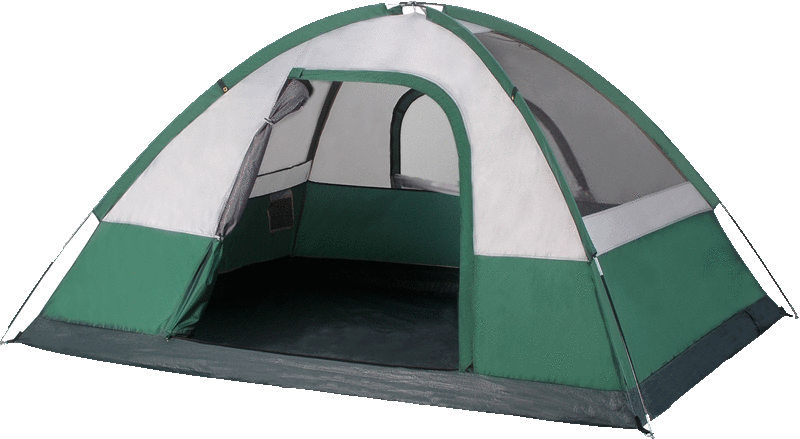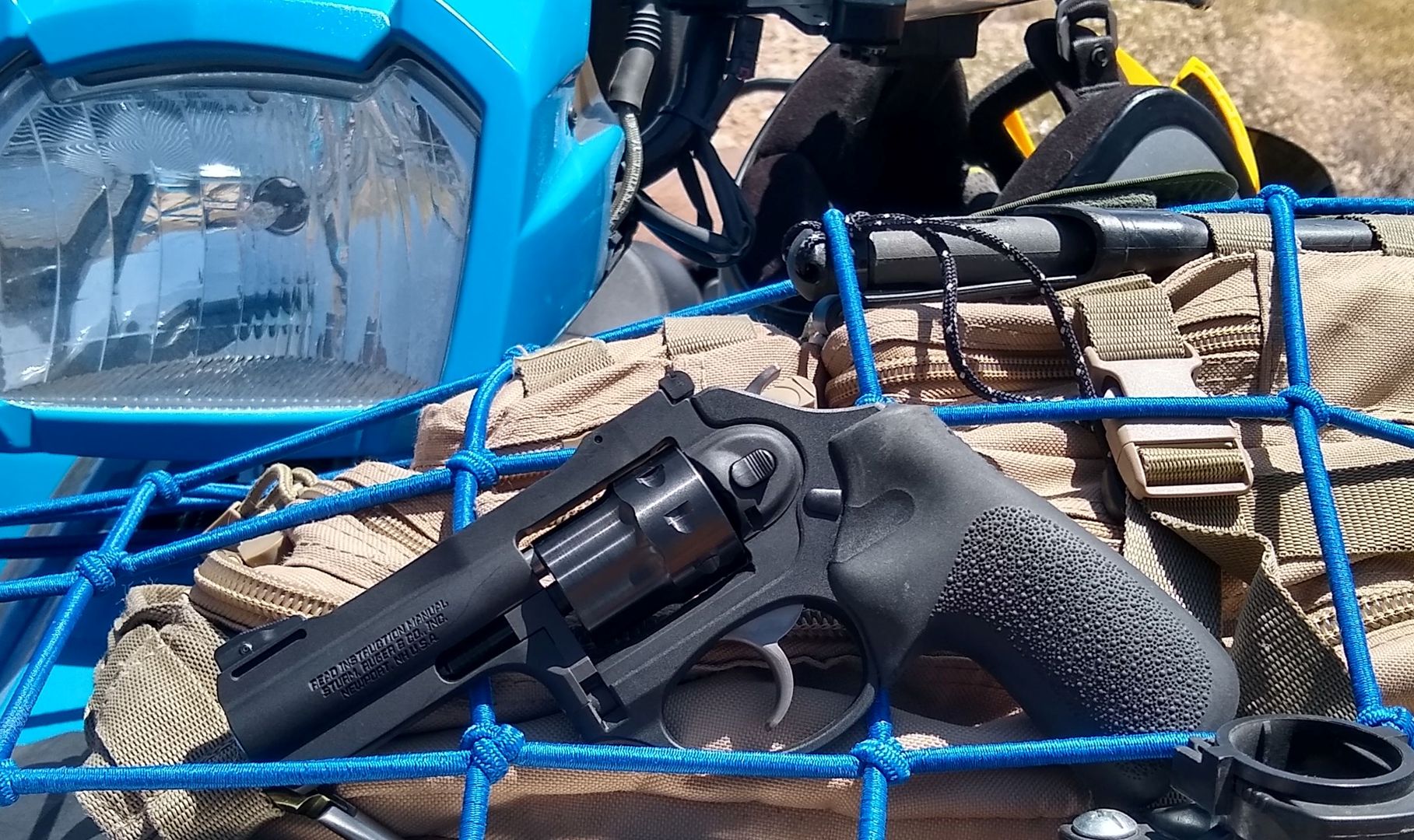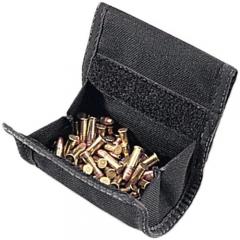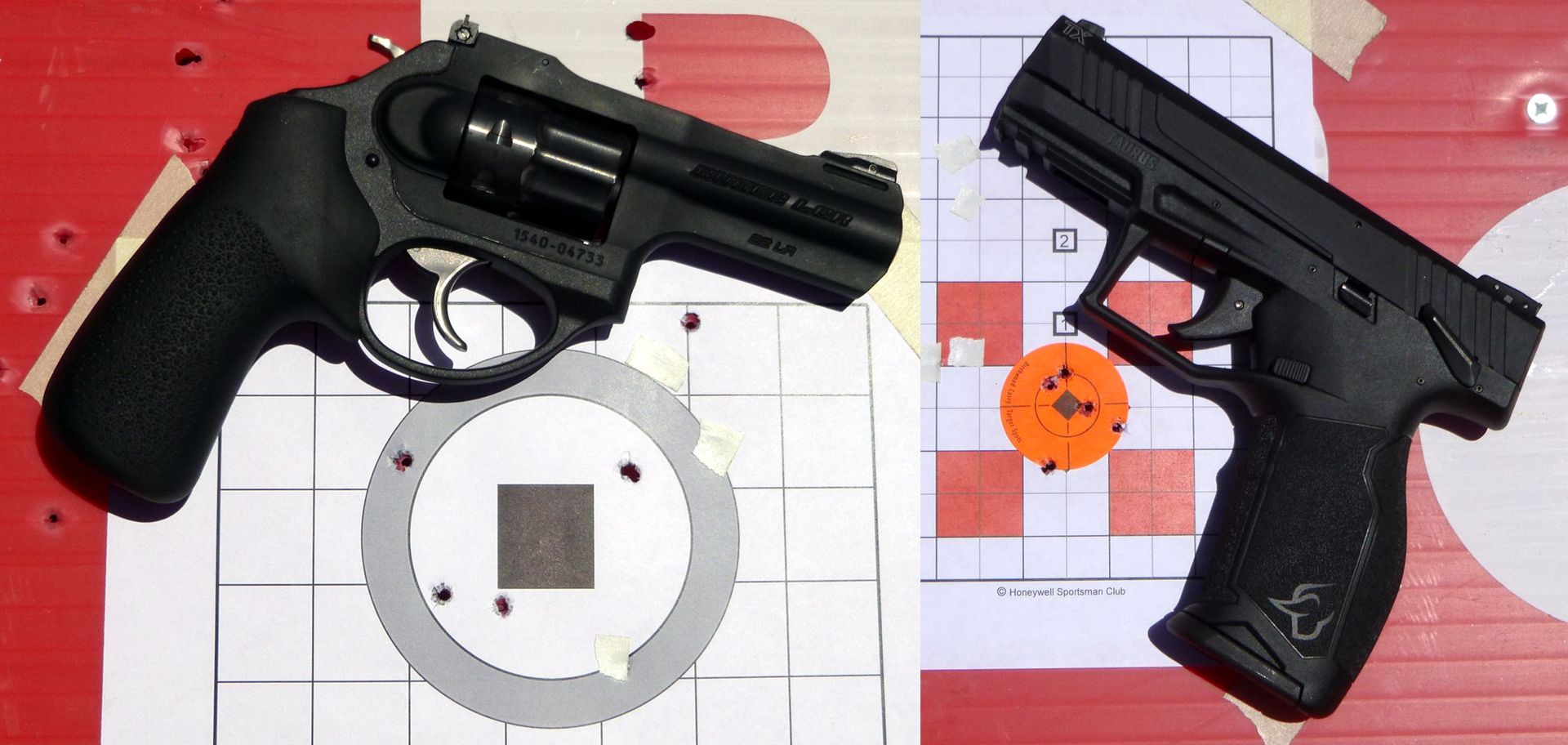Summer is here. It is a time where we may be spending more time in pursuits
such as camping, hiking, riding ATVs, or fishing – just plain old enjoying
ourselves in the outdoors. While wearing a gun on our hip may not be the
most appropriate thing when hiking the trails in the city preserves, when
outside of town, like in the national forest, many of us shootists enjoy the
constant companionship of a trail gun.
Call it a trail gun, a camp gun, or a kit gun, what I am talking about is a
lightweight, unobtrusive handgun that you have on you in the outdoors, when
you are engaged in pursuits other than something that centers on the gun.
In September of 2012, I wrote a piece on my favorite trail gun to date, the
Smith & Wesson Model 632
Carry Comp Pro in .327 Federal Magnum. The beauty of that chambering is
that it can shoot .32 S&W short, .32 S&W Long, .32 H&R Magnum, plus .327
Federal Magnum. That is an incredibly varied spectrum of power level that
approximates .22 LR on the low end, and .357 Magnum at the top.
With that said, a gun for trail and camp chambered in .22 LR has many virtues
of its own to recommend it. Chief among those virtues is inexpensive ammunition
that you often buy in packs of 500. There is no need to worry about saving the
shells to reload. When rambling around the woods, you can carry a lot of rounds
on you with little penalty in bulk or weight.
While researching others’ opinions on the ideal gun for trail and camp, I came
across many who wouldn’t venture out alone in the woods with nothing less than
a 9mm, up to a 12 gauge shotgun loaded with heavy buckshot or slugs! Obviously,
these folks are most concerned with self-defense considerations. While I don’t
completely discount those concerns, my “use case” centers far more around having
fun in the woods – target practice against raging pine cones, or discarded beer
cans for example, on a hike or in my boondock camp.
The .22 of course will serve quite admirably for self-defense – against snakes,
and against small rabid mammals like skunks and foxes. And remember that you
don’t have to rely on just one shot. I don’t know anyone or anything that would
like to be shot by a fusillade of .22 LR. The Ruger LCRx I will discuss in a few
moments holds 8 rounds, the Taurus TX22, double that. I can’t say for sure, but
my bet is that you could turn away a mountain lion with a cylinder-full of .22s.
The thought is terrifying, but you are far from defenseless with a .22 on your hip.
The idea of the “kit gun,” as a gun that an outdoorsman keeps in his kit of
outdoor gear, has been around for a long time. Gun writers often explain that
it is a gun that you keep in your ruck sack or tackle box, just in case, “for
snakes and such.”
When I first read of this notion, of a gun in your tackle box, I was totally
incredulous. I grew up as the son of an avid High Sierra trout fisherman. My
introduction to camping and the outdoors was through this lens. I had never
seen or heard of Dad, nor of anyone else in my extended family of avid fishermen,
carry a gun in their tackle box. Is that really a thing?
I know that my own tackle box is so full of fishing gear that there is no room
whatsoever left in there to hold a .22 revolver, the quintessential kit gun.
How big does your tackle box have to be? I remain totally incredulous.
Maybe it’s just metaphoric. As a dedicated shootist today, I can understand
wearing a handy .22 on your belt while walking a creek bank with fishing pole
in-hand. I just don’t get the notion that you would store it in your tackle
box between outdoor adventures, or pack one in there while fishing. What use
is it when you have to untangle it from the loose leaders, unhook the treble
hook of a Roostertail from the rubber grip, and wipe the salmon egg or
PowerBait residue off the sights before you can employ it? 
I’ve been thinking that I needed a handy .22 trail gun for a while. Though the
S&W .327 has been ably filling the trail gun role for me, I thought that it was
finally time to get a .22. But after getting a .22 Ruger LCRx revolver, another
cool new .22 caught my attention, the Taurus TX22. Both are about the same
overall size and weight, a little over 17 ounces, but which one is a better trail
gun?
Ruger LCRx 3 inch
The Ruger LCR, for Lightweight Compact Revolver, was introduced in 2009 as a snub
nose, 5-shot, double action only, shrouded hammer revolver in .38 Special +P. The
LCR broke new ground in the firearms market as the first revolver to employ polymer
in its frame construction.
The LCR is actually made from four main materials: The lower grip frame, which
houses the fire control mechanism, is made of polymer. That is attached to a main
frame of aircraft grade 7000-series aluminum. The barrel is stainless steel and is
pressed into the aluminum frame. The cylinder is also high strength stainless steel,
as it must be to contain the pressure of the mini-explosion that happens each time
that you pull the trigger. The fourth material is the synthetic rubber grip from Hogue.
With a barrel length of just 1.87”, the LCR was introduced as a simple, reliable,
and safe to carry gun for everyday deep concealment carry. It was designed to be
as lightweight as possible. To further reduce weight, the steel cylinder is deeply
fluted, such that the forward end of the cylinder is noticeably of a smaller
diameter than the rear.
Another major design feature was an excellent non-stacking double action trigger
pull. This was accomplished through some modern mechanical engineering magic
involving a patented friction reducing cam mechanism.
When these first came out, I wasn’t really interested, because I’ve never been a
fan of hammerless snubbies in general. But I got the opportunity to pull the
trigger on one at a gun show, and was very impressed by the smooth and light double
action squeeze. It was a revelation.

LCRx snubby, top; adjustable sight 3” LCRx, bottom
|
Since the 2009 introduction of the first .38 Special LCR, the product line has
expanded with the addition of new calibers. At the end of 2013, Ruger introduced
a new version with an exposed hammer, the LCRx – the “x” is for “exposed”, get it?
This was followed up a year later, at the end of 2014, with the 3” barrel version
of the LCRx, chambered in .38 Special once again. This gun featured a longer grip,
a thicker top strap and adjustable sights. While still relatively small and light,
it is certainly less concealable. However, what we have now is a perfect light
weight trail gun. The 3” barrel is not too long, not too short. The adjustable
sights and the exposed hammer are exactly the features that you want in a trail gun.
Finally, we get to the gun that this story features, the 3” Ruger LCRx in .22 LR
which was introduced to the market in April of 2017. While in .38 Special the
capacity is only 5 rounds, in .22 LR, the capacity is boosted to 8 shots.
Unfortunately, the excellent light double action trigger pull of the LCR(x) is
lost when the gun is made for .22 LR. To assure reliable rimfire ignition, Ruger
had to use a heavier action spring in the .22s. This also affects the single
action hammer release. The trigger is not the angelically light SA pull that I
am used to on my Smiths. Oh, it’s still quite shootable, just a bit on the heavy
side. I wish that I had a trigger pull gauge to measure the single action pull,
but by feel and experience, my guess would be in the vicinity of 6 pounds. By
the way, it is perfectly OK to dry fire the LCRx .22, but I don’t make a habit of
it.
The adjustable sights on the LCRx are pretty decent. The front is a pinned ramp
with a white line insert for visibility. The rear is all black, fully adjustable
for windage and elevation. There is some air visible at the sides of the front
sight when looking through the rear notch to allow precise alignment. I can see
that when I am wearing my computer glasses, but unfortunately I cannot when I am
wearing my variable focus glasses which allow me to walk through the woods without
tripping.
Taurus TX22
Taurus introduced the TX22 semiauto .22 LR pistol at the SHOT show this year in
mid-January. Unlike many other modern polymer framed semiauto .22s on the market
today, the TX22 is not designed as a little brother rimfire version of a centerfire
handgun. It was designed from the ground up as a defensive or duty-sized,
striker-fired, .22 semiauto of its own design. No design compromises needed to be
made to try to make it look like any particular centerfire handgun.
The action type is straight blow-back. The slide is made of aluminum with a steel
insert at the breech block. The barrel length of the TX22 is 4.1 inches.
Take down is super easy. It takes down very similarly to the way most polymer duty
pistols do. To begin, the magazine must be removed. Retract the slide and make
sure that there is not a round in the chamber. Retract it several times, just to
be double-dog-gone sure. Then pull the trigger to release the striker.
Just above, and in front of the trigger is the action release catch. With your palm
over the top of the slide, pinch this catch between your thumb and forefinger and
push down. The slide will be released and will travel forward under spring tension
about 1/3 of an inch. Push the slide forward a little more, and it can now be lifted
off the top of the frame.
The barrel comes out with the slide, just like it does on most centerfire duty pistols.
However, since it is a straight blow-back design, the barrel does not tilt to unlock
in any part of the firing cycle. There is a captive spring on a polymer guide rod
underneath the barrel as you would expect to find in any duty pistol.
The TX22 has several notable features that are best in class compared to similar .22
semiautos on the market today. Perhaps first among those features is a 16+1 round
ammunition capacity. Taurus was able to pack 16 rounds into a regular size magazine
by using a unique stacking arrangement for the rounds.
Because of the rim on .22 LR ammo, most .22 handguns stack the rounds one on top of
the other with the rim of the round above, in front of the rim of the round below.
This often leads to a characteristically Luger-like grip angle in many .22 pistols.
This works fine up to about 10 rounds. After that, you need to start curving the
magazine because the stack-up of rim heights starts to make the deepest rounds point
more and more upward.
But Taurus did something different. Instead of stacking the rounds one on top of
the other with a higher round’s rim in front of the rim below it, Taurus staggered
the rims horizontally. This allows the cartridge bodies to rest on top of each other,
instead of having a rim rest on the body of the cartridge below it. This allows more
rounds in a magazine and a straighter grip angle. The TX22 ships with two 16-round
magazines. The magazines are polymer, not steel, but they seem quite solid. A
thoughtful detail is that one magazine is labeled with a “1” and the other is labeled
with a “2” so that you can keep track of which is which.
Another notable feature of the TX22 is an excellent trigger. There is some initial
take up as the trigger safety is disengaged, a wall, and then a rather crisp release
with about 4 pounds of pressure.
The TX22 was designed and is manufactured here in the U.S. It is not a Brazilian
import. The trigger system, and the rest of the gun for that matter, was designed
by a team headed up by a guy named Jason Pittman. Taurus is so excited about this
trigger design that they have given it the name of the Taurus Pittman Trigger System
(PTS).
As introduced, the TX22 comes with an ambidextrous frame mounted thumb safety in
the same position and manner of operation as you find on a 1911. The barrel is
threaded and capped with a thread protector. It ships with a suppressor adapter
that can be put on the end of the barrel in place of the thread protector.
Though not intended as a trail gun, but as befits one, the rear sight is adjustable
for both windage and elevation. Both front and rear sights are rather low profile,
of the white three-dot style. There is sufficient space between the sides of the
front sight and the width of the rear sight notch to allow good precision in sight
alignment. The nice trigger allows maintaining that sight alignment as you pull
through and break the trigger.
Taurus is already busy creating new variations. One new variant deletes the threaded
barrel and suppressor adapter. Another variant deletes the thumb safety. The first
new color variant has been announced, Flat Dark Earth. For the less-free states, the
gun ships with 10 round magazines instead of the 16s. Sad!
Auto vs. Revolver
By digging through my drawer of old holsters, I was able to find suitable nylon
holsters for each. For the Taurus TX22, I found that a size 16 Uncle Mike’s Sidekick
is a nice tight fit, with no retention strap needed. As a bonus, this holster is
equipped with a spare magazine pouch on the spine. With a full mag in the gun, one
round in the chamber, and one spare mag on the holster, you are carrying 33 rounds of
goodness in one nice light package.
The Ruger fits just about perfect in an L-Series holster from Soft Armor, coincidentally,
also in size 16. This holster is designed for medium size autos, but works nicely for
the Ruger after I cut a 1¼” long channel into the top spine of the holster to allow the
rear sight some clearance. Supposedly, there are not too many holsters on the market
right now designed specifically for the 3” LCRx.
I think that .22 speedloaders would be too bulky for carrying extra ammo on the trail.
Instead I use a small Uncle Mike’s dump pouch that rides on my belt. You can carry a
decent amount of extra ammo in this pouch. I don’t anticipate the need for fast reloads
on the trail.
Unfortunately, this particular pouch is no longer made, but a similar semi-rigid pouch
is available today from Crosman for carrying air gun pellets. I have to say though,
that I prefer the old Uncle Mike’s.
I don’t need much of an excuse to get out of town on the weekends and head for the
desert or woods. I decided to make a day trip up to my favorite deer camp to hang out
for the day for some shooting and hiking.
After arriving, I set up a table and a chair at the back of the truck. At 15 yards,
I set up a target frame and one of the .22 swinger sets that David Stimens had built
for the Game & Fish Expo.
Though I already had a rough adjustment on the Ruger’s sights, I spent some time trying
to get the sights adjusted as perfectly as I could using the Federal 325 round Value Pack
ammunition. This ammo has a 36 grain copper plated hollow point bullet rated at 1260 fps.
I was not interested in a comprehensive test of various types of ammo in both guns, so I
just picked one that I trusted and went with it.
At the end of the day, the best 5-shot group that I could squeeze out of the Ruger,
shooting single action, was 3.77 inches at 15 yards. I was a bit disappointed.
Then I did the same thing with the Taurus. I spent some time perfecting the zero,
adjusting the rear sight. That’s a little weird, because there are two horizontal
adjustment screws on the Taurus’ rear sight. It seems that you need to adjust them
both to move the sight from side to side without cocking the sight at an angle.
When I was ready to shoot a group for record, I was stunned when those 5 shots grouped
into 1.15 inches!
Well there’s no way to mealy-mouth these results. In this comparison, the polymer auto
takes the kit gun crown from the revolver. Better accuracy, twice the capacity, 60% of
the cost of the Ruger, in about the same size package.
Taurus pistols, especially their autos, have suffered from a bad reputation over the years.
I did have two failures to feed out of around 150 rounds fired through the TX22 on this day.
That’s not unusual at all for .22s in auto-pistols. Other than that, I had perfect
reliability.
I love revolvers and I’m not ready to give up on the LCRx yet. A revolver will operate
with low velocity rounds like the .22 Short and the CB that the auto would choke on.
But since the vast majority of .22 rimfire shot today is the LR, for summer fun on the
trail, the TX22 is a real winner.

![]()










